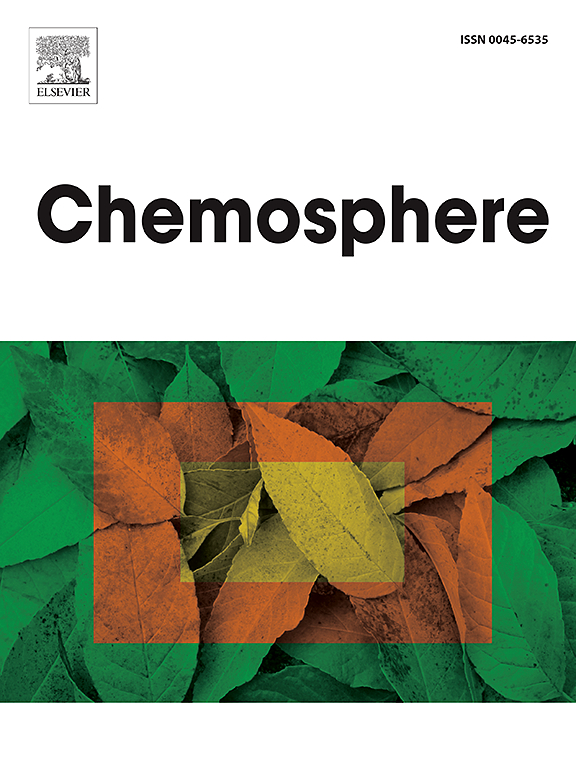开发和测试基于海洋线虫元条形码的新生态质量状态指数:概念验证。
IF 8.1
2区 环境科学与生态学
Q1 ENVIRONMENTAL SCIENCES
引用次数: 0
摘要
线虫是海洋数量化动物中最具多样性和优势的一类,具有作为生态质量状况生物指标的潜力。本研究首次探索了基于线虫扩增子序列变异(Amplicon Sequence Variants, asv)生态行为标定的线虫元条形码对EcoQS指数推断的适用性。为了实现这一目标,我们分析了2018年和2021年在北海丹麦西海岸三个海上石油平台周围地区收集的沉积物eDNA样本中的线虫群落。利用基于eDNA和三个平台的2021年环境数据的训练数据集作为训练数据集,将线虫asv划分为生态类群。然后,这些分配使我们能够在这三个平台和一个独立的数据集(2018年采样的一个平台)中推断出EcoQS。从nema-gAMBI推断的EcoQS与平台的污染梯度完全一致。事实上,距离平台较近的观测站(即100米和250米)的EcoQS比距离较远的观测站(即参考或3000米)的EcoQS要低。nema-gAMBI似乎能很好地捕捉到平台周围的EcoQS变化,并与环境参数(如微量元素和碳氢化合物污染)有很好的相关性。事实上,nema-gAMBI与传统的基于大型动物的AMBI呈正相关且显著相关。目前的概念证明强烈主张将线虫edna为基础的指数应用于EcoQS的评价。本文章由计算机程序翻译,如有差异,请以英文原文为准。

Developing and testing a new Ecological Quality Status index based on marine nematode metabarcoding: A proof of concept
Nematodes are the most diverse and dominant group of marine meiofauna with high potential as bioindicators of the ecological quality status (EcoQS). The present study explores, for the first time, the applicability of the nematode metabarcoding to infer EcoQS index based on the calibration of ecological behaviors of nematodes Amplicon Sequence Variants (ASVs). To achieve this, we analyzed the nematode community in sediment eDNA samples collected in 2018 and 2021 in areas around three offshore oil platforms in the Danish west coast of the North Sea. One training dataset based on eDNA and environmental data from the three platforms in 2021 covering a wide range of environmental gradients has been used as a training dataset to assign the nematodes ASVs to Ecological Groups. These assignments then allowed us to infer the EcoQS both around these three platforms and in an independent dataset (one of the platforms sampled in 2018). The EcoQS inferred from the nema-gAMBI is perfectly in line with the pollution gradient of the platforms. In fact, stations located close to the platforms (i.e., 100 m and 250 m) show a relatively lower EcoQS than those at greater distance (i.e., reference or 3000 m). The nema-gAMBI seems to capture well the EcoQS variability around platforms and correlates well with the environmental parameters (e.g., trace element and hydrocarbon pollution). Indeed, the nema-gAMBI is positively and significantly correlated with the traditional macrofauna-based AMBI. The present proof of concept strongly advocates for the application of the nematode eDNA-based index in the evaluation of EcoQS.
求助全文
通过发布文献求助,成功后即可免费获取论文全文。
去求助
来源期刊

Chemosphere
环境科学-环境科学
CiteScore
15.80
自引率
8.00%
发文量
4975
审稿时长
3.4 months
期刊介绍:
Chemosphere, being an international multidisciplinary journal, is dedicated to publishing original communications and review articles on chemicals in the environment. The scope covers a wide range of topics, including the identification, quantification, behavior, fate, toxicology, treatment, and remediation of chemicals in the bio-, hydro-, litho-, and atmosphere, ensuring the broad dissemination of research in this field.
 求助内容:
求助内容: 应助结果提醒方式:
应助结果提醒方式:


